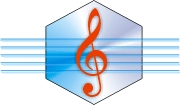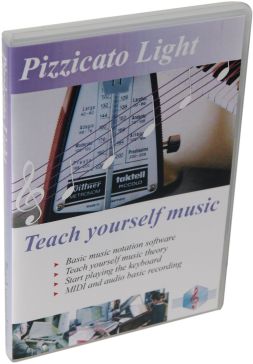Rhythmic voices
Pizzicato can
manage 8 rhythmic voices. By default, a small menu shows
"1-8" in the upper left corner of the window, which
lets Pizzicato manage the voices distribution of the notes you
encode. Let us analyze different cases. When the measure
only contains one voice, Pizzicato automatically assigns all the
notes to the first voice. If you try to add more beats than the
measure can accept, a second rhythmic voice is created (the
additional notes are written from the beginning of the measure).
When you have a single voice measure which presents a complex
rhythm, it can be useful to force Pizzicato to keep all the notes
in the first voice. To do that, select the small "1-8"
menu into "1". If the measure
contains several voices, you can keep the "1-8" option
and encode voice by voice. This is important: fill in first a
whole rhythmic voice (and thus the measure) before encoding the
next one. If you try to encode a second voice before you achieve
the first one, Pizzicato could consider that you continue the
first voice because it is not complete. You can also force
Pizzicato to work by voice. In this case, modify the
"1-8" menu into "1" to work on the first
voice, into "2" to work on the second voice,... While
placing this menu for example to "2", the notes which
do not belong to the second voice appear in gray and the new
notes are added to the second voice. This principle is
the same for the incomplete voices. Let us take for example a
measure that contains 4 quarter notes as the first voice. If you
want to add a second voice including a quarter note on the first
and the fourth beats, you will have to place 2 rests between
these notes to complete your rhythmic voice. Or you can check the
"Incomplete voices analysis" box of
the"Options" menu ("Justification..." item).
This option lets Pizzicato analyze a second voice in relation to
a first voice. For example, if your measure includes 4 quarter
notes and if you place an additional quarter note above the third
one, Pizzicato will understand that this additional note must be
played as a second voice on the third beat, even if this second
voice is not complete. You can verify or
analyze the way in which Pizzicato assigns the voices in the
"Option" menu, "Graphism..." item. To assign
a colour to each voice, select the "Voice color" item
in the note color popup menu. Pizzicato will display each voice
in a different color.

All rights reserved for all countries
Pizzicato is a trademark owned by Arpege sprl





























